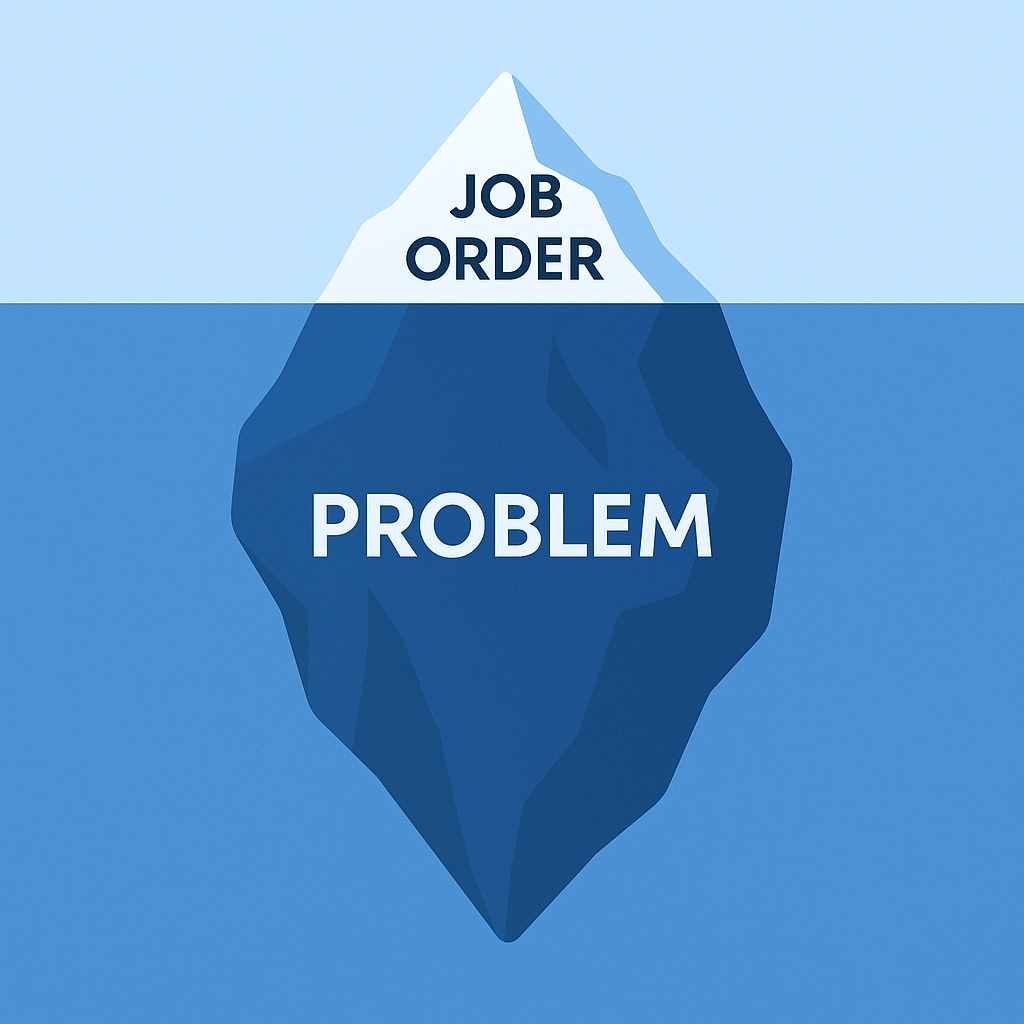Selling With Your Consultant
In my previous post, How to Prevent Unexpected Contract Terminations, I shared how systemizing consultant and client check-ins at key milestones...

Every CEO would smile ear to ear if they could grow their business faster than the industry. A well designed go-to-market strategy is imperative to achieving this level of growth and it requires more than sales, operational and/or recruiting experience. Consistently beating the industry requires management acumen and marketing  expertise. In fact, organizations with little or no management and marketing experience are prone to commit mistakes when designing their go-to-market strategy. In some cases they flat out neglect this step altogether.
expertise. In fact, organizations with little or no management and marketing experience are prone to commit mistakes when designing their go-to-market strategy. In some cases they flat out neglect this step altogether.
In this post, developing your go-to marketing strategy, I’m going to share with you what a go-to-market strategy is, why you need one and the key elements to consider when designing your go-to-market strategy.
What is Go-To-Market Strategy?
A go-to-market strategy defines how the company will operationalize their offerings to penetrate their market and achieve revenue and profitability goals. Your go-to-market strategy is not a one-time event and it’s not a new product launch or a marketing campaign. It encompasses everything from concept to deployment and execution and continuous iteration. Designing a sound go-to-market strategy requires staffing leaders to point their resources at the right markets through the best channels. When establishing your go-to-market strategy you should consider the following components.
Total Addressable Market
In order to determine your coverage and resources needed to penetrate your market you first need to understand what your total addressable market is. If you don’t understand your total addressable market you will miss revenue opportunities.
Identify Your Ideal Target Customer Profile
In order to maximize market penetration you will first need to define your target market. Start by identifying and defining your ideal target customer profile including their demographics. Part of this process also includes identifying who your target buyers will be such the Human Resources Manager or the CIO.
Geoffrey Moore, who is a management consultant and well known throughout Silicon Valley for his work in marketing high-tech products and authoring his classic boopk, Crossing The Chasm, pointed out that “Companies that try to be all things to all people have significantly higher costs, never really establish a strong customer base from which to grow and often disappear before achieving profitable growth.”
I suggest we take his advice, identify your ideal target customer profile.
Value Proposition & Differentiation
Running an IT staffing business means you’re in the services industry. The industry of course is saturated with suppliers which makes it a commodity. You have to decide, are you going to compete and differentiate on price or customer experience? In my experience, most staffing owners neglect this decision all together which is partly the reason for why you have sales reps working for the same company who have a huge disparity in their average gross profit margins.
Once you determine how you’re going to compete and differentiate you can build your value proposition. Read this blog to learn more about value propositions and how to build them.
Sales Channels
Have you selected the best, most effective sales channel for your market? Most staffing companies deploy a direct sales team but that doesn’t mean it is the only sales channel or the most effective sales channel. What other sales channels might you consider?
Determining which sales channels will give you the biggest bang for the buck is a strategic decision that should be made by the CEO and/or Sales VP. Failing to explore and consider alternative sales channels for acquiring customers at a quicker rate and/or cheaper cost would be a big oversight for any business owner. Top performing organizations understand which sales channels their customers prefer and respond and adapt accordingly. Why continue to use traditional channels when new, innovative channels are available and the customer prefers them over traditional means?
Scale and Bandwidth
This refers to understanding how big of a sales and recruiting team you will need to eventually scale to the size necessary to achieve your market share goals. You can figure this out by reverse engineering the numbers based on your total addressable market and your revenue and profitability goals. There are however a few common pitfalls that you should be aware of. They include:
What Do I Do Next?
After reading this you may be thinking you need to update your go-to-market strategy. Below are five key indicators that your peers in the IT staffing industry use to determine if and when they need to change their go-to-market strategy.
As I mentioned at the onset, your go-to-market strategy is not a one-time event but a process that evolves as your business grows and markets change. The fastest growing IT staffing companies including their CEO’s are aware of the potential pitfalls which is why they have adopted an agile go-to-market strategy. It is their willingness and courage to constantly iterate on their strategy that allows them to outpace the industry. Do you have the courage and are you committed?

In my previous post, How to Prevent Unexpected Contract Terminations, I shared how systemizing consultant and client check-ins at key milestones...

About a year ago, I was serving as the fractional revenue leader, managing sales and recruiting for a client.

If you’ve worked in staffing long enough, you’ve been trained to chase job orders.